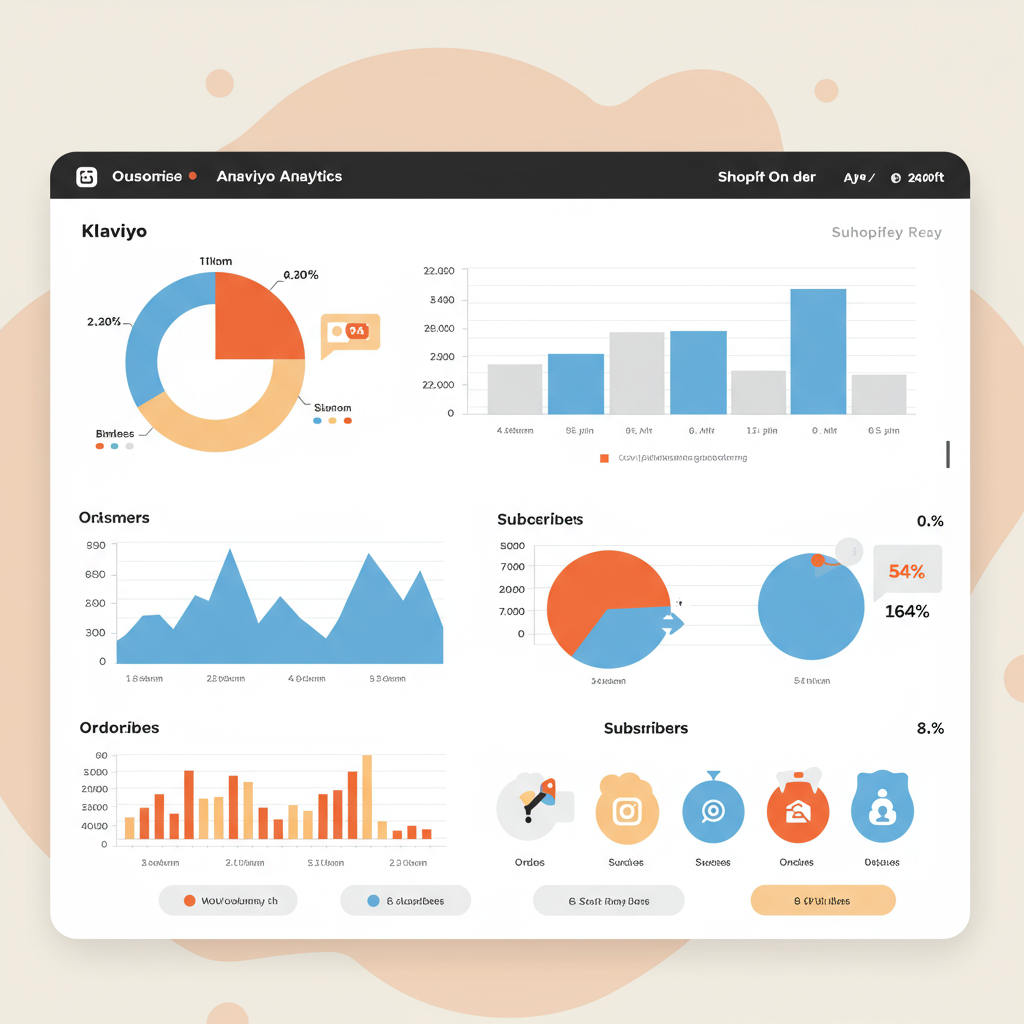Unlock the full potential of your customer data and automate personalized marketing campaigns to drive sales and build lasting relationships.
Hey there, fellow Shopify merchant! If you’re looking to supercharge your email marketing and truly connect with your customers, you’ve probably heard of Klaviyo. Today, I want to walk you through how I’ve leveraged Klaviyo with my Shopify store to drive significant growth.
For me, Klaviyo isn’t just another email platform; it’s a powerful customer data platform that integrates seamlessly with Shopify, allowing for incredibly personalized marketing. It helps me understand my customers on a deeper level, which is invaluable.
While Shopify’s built-in email features are okay for basic notifications, Klaviyo takes things to an entirely new level. It’s about automation, segmentation, and delivering the right message to the right person at the right time, every time.
The first step is surprisingly straightforward: you’ll need to connect your Shopify store to your Klaviyo account. This is usually done through the Klaviyo dashboard or by installing the Klaviyo app directly from the Shopify App Store.
Once you’re logged into Klaviyo, navigate to the ‘Integrations’ section and select ‘Shopify.’ You’ll be prompted to enter your Shopify store URL and authorize the connection. It’s a few clicks, and then the magic of data synchronization begins.
What happens next is crucial: Klaviyo starts syncing all your historical Shopify data. This includes customer profiles, order history, product views, abandoned carts, and much more. This rich data forms the foundation of all your personalized marketing efforts.
Don’t just let the data sit there. Take some time to explore the ‘Profiles’ section in Klaviyo. You’ll see individual customer profiles enriched with their Shopify activity. This is where you truly start to see the power of the integration and understand your customers better.
With all this data at your fingertips, you can create highly specific segments. Instead of sending a blanket email to everyone, I can target customers who bought a specific product, viewed a certain collection, or haven’t purchased in 90 days.
I often create segments like ‘Engaged Subscribers (Opened X emails in Y days),’ ‘Repeat Customers (2+ orders),’ ‘High-Value Customers (LTV over $Z),’ or ‘Customers who viewed Product A but didn’t buy.’ The possibilities are endless.
This is where Klaviyo truly shines. Flows are automated email (or SMS) sequences triggered by specific customer actions or events. They’re your always-on sales team, working tirelessly in the background.
The Abandoned Cart Flow is probably the most impactful flow for any Shopify store. When a customer adds items to their cart but doesn’t complete the purchase, Klaviyo can automatically send a series of timely reminders.
My typical Abandoned Cart strategy involves a three-email flow: one after an hour, another after 24 hours (perhaps with a gentle discount to encourage completion), and a final one after 48 hours. This alone has recovered countless sales for me.
For new subscribers, a Welcome Series flow is absolutely essential. It introduces your brand, shares your unique story, highlights best-sellers, and gently encourages a first purchase. I usually make this 3-5 emails long to build rapport.
Don’t forget about your customers after they buy! A Post-Purchase flow can include order confirmations, shipping updates, product care tips, cross-sell/upsell recommendations, and even a request for a review to build social proof.
Similar to abandoned cart, the Browse Abandonment flow targets customers who viewed specific products but didn’t add them to their cart. It’s a highly effective way to re-engage interested shoppers and bring them back to your site.
For customers who haven’t purchased in a while, a Win-Back flow can re-ignite their interest. Offer a special discount, highlight new arrivals, or remind them of your unique value proposition to bring them back into your customer base.
Klaviyo also allows you to create beautiful, conversion-optimized pop-ups and embedded forms directly on your Shopify store. These are crucial tools for growing your email list and capturing new leads.
I use different forms for different purposes: a general sign-up pop-up for new visitors, an exit-intent pop-up to capture those about to leave, and sometimes a specific form for a lead magnet or an exclusive discount.
While flows are automated, campaigns are your traditional one-off email blasts for promotions, new product launches, holiday sales, or important announcements. They’re your direct line to your audience.
Even with campaigns, I rarely send to my entire list. I use the segments I’ve created to ensure the campaign is relevant to the recipients, leading to significantly higher open and click-through rates, and ultimately, more sales.
Klaviyo makes it incredibly easy to A/B test subject lines, email content, and even send times. Always be testing to optimize your results! Small improvements in these areas can lead to significant gains over time.
Klaviyo provides robust analytics for both flows and campaigns. Pay close attention to open rates, click-through rates, conversion rates, and the revenue generated. This data is vital for helping you refine and improve your strategy.
Klaviyo plays well with many other Shopify apps. For instance, I integrate it with my review app to trigger automated review requests, or with my loyalty program to send points updates and reward notifications.
Using Klaviyo with Shopify has truly transformed my marketing efforts. It’s moved me from generic blasts to highly personalized, automated customer journeys that feel authentic and consistently drive sales for my business.
Don’t feel overwhelmed when you first start. Begin with the essential flows like abandoned cart and welcome series, then gradually add more sophistication and complexity as you get comfortable and see results.
The true power lies in the data and the automation. By understanding your customers deeply and setting up intelligent, automated flows, you can create a marketing machine that works for you 24/7, even while you sleep.
What are your thoughts on using Klaviyo with Shopify? Have you found it as impactful as I have? I’d love to hear your experiences and any tips you might have!






